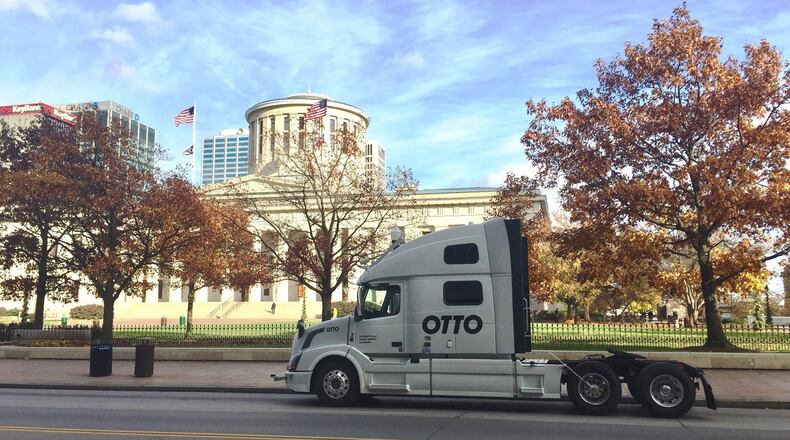“Ohio has been at the heart of automotive manufacturing and innovation since the industry’s earliest days. Those ties strengthen with each passing year and innovations developed here will continue to build on our state’s historic role as a world leader in transportation technology,” Kasich said.
The technology will allow automotive testing, research and manufacturing facilities to test smart transportation technologies on a highway that carries up to 50,000 vehicles per day through rural and urban settings in a full range of weather conditions.
This data will also provide more frequent and accurate traffic counts, weather and surface condition monitoring, and incident management improvements.
“Data collected on this corridor will allow automotive innovators to test and refine jobs creating technologies that are going to help move people and products more safely and efficiently than ever before,” said Jerry Wray, Ohio Department of Transportation director.
A vehicle from self-driving truck maker Otto started a 35-mile journey of U.S. 33 between Dublin and East Liberty on Wednesday. A human driver was in the self-driving truck as a backup. The self-driving truck also is slated to travel on the Ohio Turnpike later this week.
Otto is owned by Uber, and the company says self-driving trucks will make highways safer. Hardware and software is tuned for the consistent patterns and road conditions of highways. Sensors are installed high atop existing trucks, offering vehicles an unobstructed view of the road ahead.
Long-haul transit is vital for nearly 70 percent of the products consumers but, according to Otto.
Kevin Burch, the president of the Dayton-based trucking company Jet Express, serves as the head of the American Trucking Associations. He said the trucking industry wants to work with scientists and the government to best utilize the newest technology. Burch doesn’t think the technology will overtake jobs, and drivers will still be needed.
“Safety is always first,” he said. “There needs to be more testing.”
He said there is, in fact, a shortage of truck drivers, as the workforce ages. More than 1 million truck drivers will be needed in the industry in the next 10 years. There are about 1.7 million truckers in the U.S. right now.
ODOT partnered with several business on the project including Honda R&D Americas, the Transportation Research Center at East Liberty and the Ohio State University’s Center for Automotive Research. Local governments – the city of Dublin, city of Marysville and Union County – have also contributed to the project.
Wright-Patterson Air Force Base, Wright State University, University of Dayton and the University of Cincinnati are among the institutions working to develop this technology.
Work to install the sensors and a fiber optic network along the corridor is scheduled to begin in May and will last throughout the summer. Traffic disruptions are not expected during installation, according to ODOT.
The Associated Press contributed to this report.
About the Author
